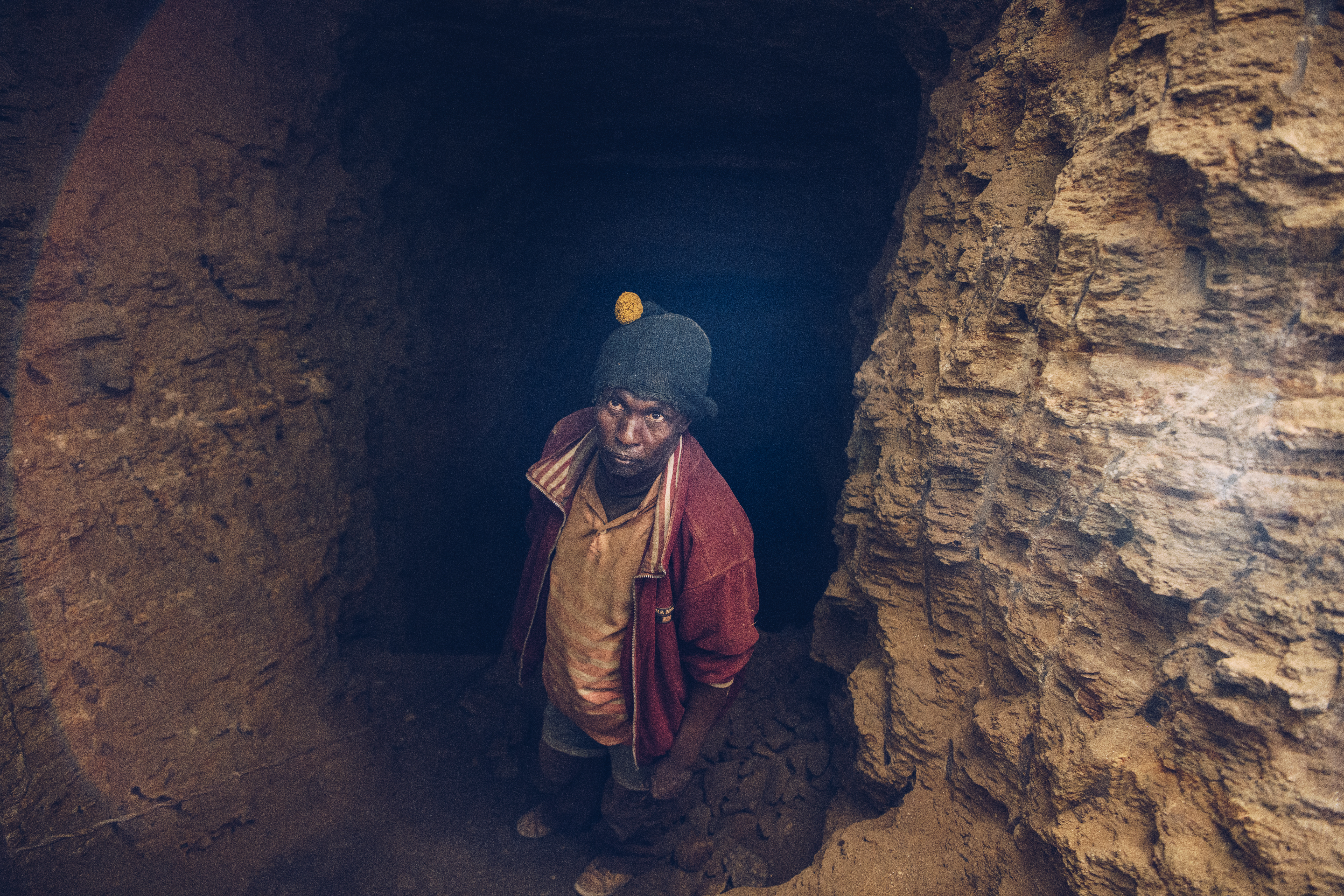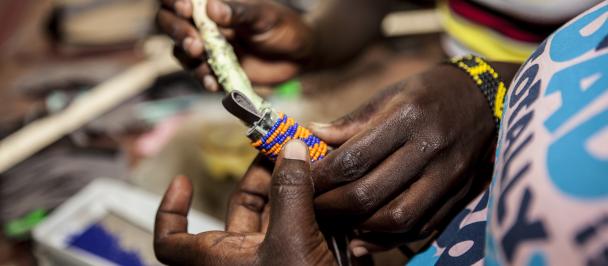A local artisan, small-scale miner in Narok - Photo: Allan Gichigi/UNDP Kenya
In rural economies, land is the basis for all livelihoods where informal mining, agriculture, and logging coexist as part of a multifunctional working landscape. Mining is often deeply entrenched in the cultural traditions of informal, artisanal, and small-scale mining (ASM) communities. The mining sector represents an emerging rural economy that provides livelihoods for millions of households worldwide. Approximately 20 million people work in artisanal and small-scale mining accounting for 45% of all ASM activity. In Sub-Saharan Africa, the adverse impacts of abandoned mines on human and ecosystem health has not been adequately addressed.
ASM is an essential source of livelihood for many communities in the county of Migori yet many miners lack the skills, knowledge, and incentives to rehabilitate degraded lands. The informality of the ASM sector render it difficult for mine rehabilitation, closure or post-closure planning due to limited capital investment, lack of financial and human resources to conduct formal exploration. While the magnitude of negative impacts from industrial mining mostly caused by catastrophic tailings, dam burstsand legacies of mine abandonment is profound, the capacity of large-scale mining actor to mitigate and redress these impacts is much better than that of artisan and small-scale miners.
In Western Kenya, continuous use of land for mining, sand and fuelwood harvesting is undermining rehabilitation and conservation efforts especially where low-tech, labor-intensive mineral processing and extraction is taking place. Migori County Artisanal Miners Cooperative (MICA) has identified mine reclamation and restoration of artisanal mines as a mechanism for ecosystems restoration over the long-term.
MICA’s interventions seeks (i) to prevent human caused sources of toxic contaminants such as mercury and other heavy metals from entering the environment, (ii) remediate and restore the land, (iii) reduce changes to hydrological functions; and (iv) reduce habitat loss for terrestrial and aquatic species in core biodiversity areas. These measures are geared towards the protection and restoration of the degraded mine sites. The strategy applied was selected for its economic and ecological efficiency, known as ‘applied nucleation’ (i.e. establishing small patches of shrubs trees to serve as focal areas for recovery). It is a new strategy that uses principles of colonization of non-forested landscapes by woody vegetation to restore forest-cover overtime. As such, MICA has embraced this approach to start the process of landscape rehabilitation at the pilot scale and aims to add new species of native trees and grasses.
Working with the Kenya Forestry Research Institute (KEFRI) as a strategic partner and the county government of Migori, MICA with support from GEF/SGP has established a functional tree nursery that produces identified tree species for restoration of degraded sites. The tree species include acacia that can survive under harsh conditions, grevilia that is good for improving soil condition, bamboo for absorption of heavy metals in the soils; casuarina and eucalyptus that are used in mine-wall construction. In collaboration with local communities, MICA has planted 11,630 tree seedlings in select mines located in the villages of Osiri, Kabobo, Mikei and Macalder. Survival rate is at 82%.
MICA, KEFRI and other stakeholders are promoting the planting of bamboo seedlings because of its fast-growing nature, and its ability to absorb heavy metals from the ground.
__________________________________
The Global Environment Facility (GEF) Small Grants Programme (SGP) of UNDP, which was launched in 1992, the year of the Rio Summit, channels financial, technical and capacity building assistance directly to civil society organizations for activities that conserve the environment while enhancing people’s wellbeing and livelihoods.
In Kenya, since 1993 SGP has supported over 400 small grants projects in the areas of Biodiversity, Climate Change Mitigation and Adaptation, Land Degradation and Sustainable Forest Management, International Waters and Chemicals.

 Locations
Locations

